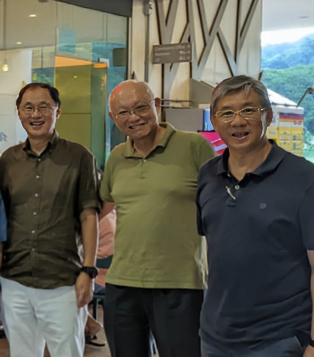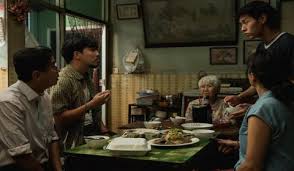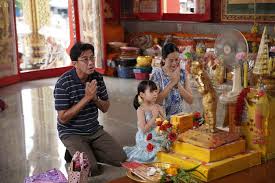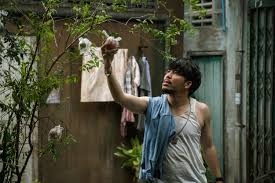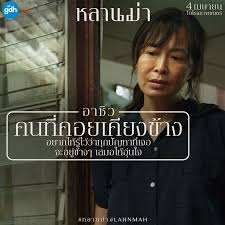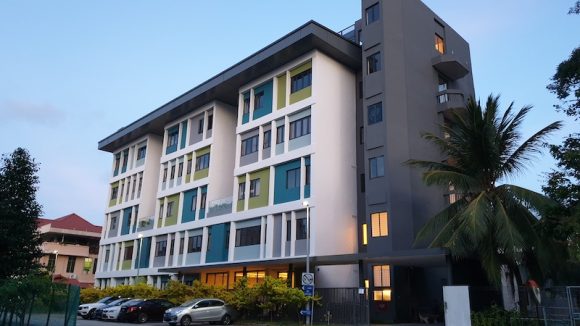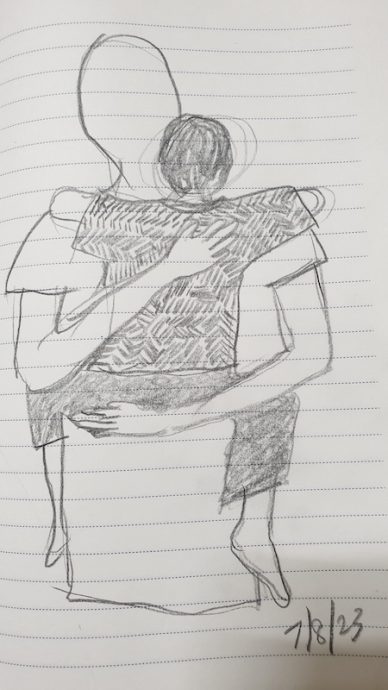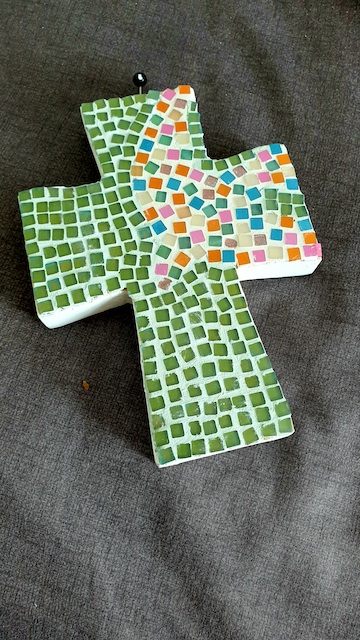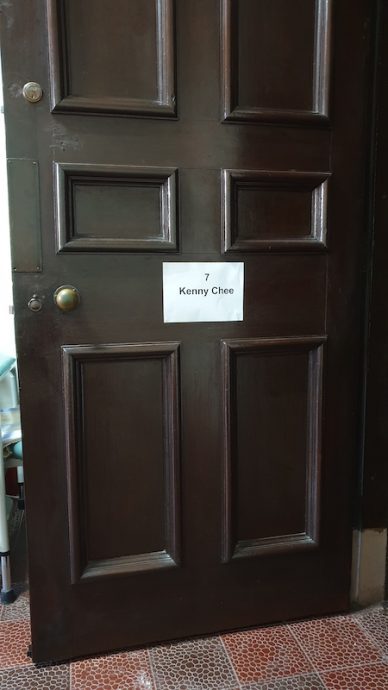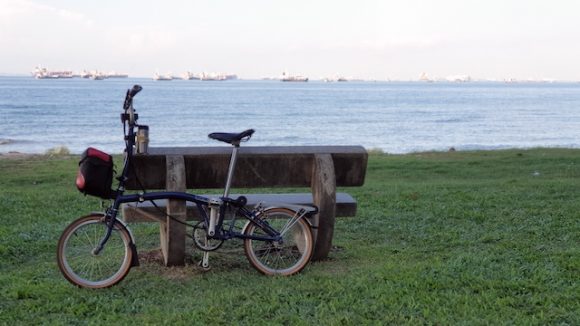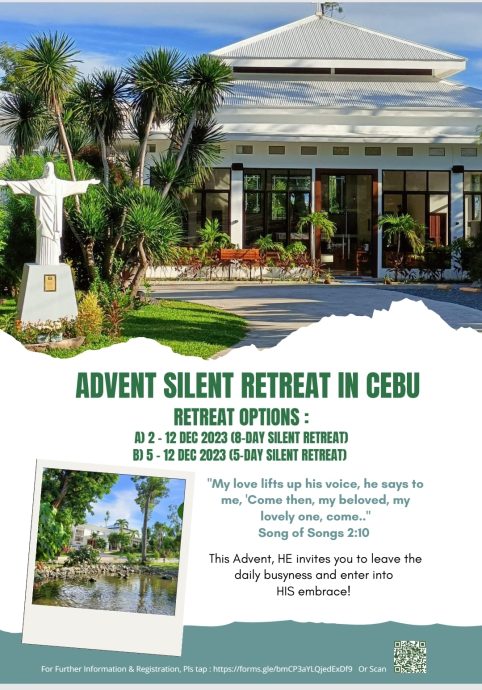For about seven years, Jimmy Tan, Koh Seng Chor and I (above picture, from R to L) have been meeting in a 3-2-1 spiritual friendship. We have met in our homes, the Railway Mall, the office or the great outdoors. Three persons, for about two hours of sharing life and prayers, once a month. This circle of authenticity and accountability has been a blessing in my life.
The Rev Dr Jimmy Tan is a chaplain, and lecturer of pastoral and practical theology at Trinity Theological College. The courses that he teaches include pastoral care, pastoral spirituality, pastoral theology, marriage and family, and Christian spirituality. He regularly leads retreats and offers spiritual direction at the college and beyond. Seng Chor and I have been blessed by his insights, authentic sharing and prayers of faith and I am sure we have been a blessing to him.
On the 14th of August, the college recently had their annual Day of Prayer when faculty, staff and students (about 180) came together for prayer. I read the talk that Jimmy gave to them at the beginning of the day. I was so blessed and inspired I asked for his permission to share the script in this blog post. Here goes:
If we pause to notice, we will observe that ‘life is full of rhythms’
The daily rising and setting of the sun, and how it influences our circadian rhythms. The rhythm of our heartbeats or the lack of it, how it communicates good health or concern. The rhythm of our breathing correlates with the pace of our walking, running, or resting. In rhythm, one seems to do better; in rhythm, a gymnast delivers a more beautiful floor exercise; in rhythm; a sprinter clocks a faster timing; in rhythm, a marathoner pushes on to the finishing line. Out of rhythm, a higher-ranked badminton player loses to an opponent many rungs lower. Out of rhythm, a student struggles to write a single line of an essay.
Rhythm affects our lives more than we realize
Even with our leisure and moods; rhythm has its influence. Music and dance with a good sense of rhythm make for better music, dance, and relaxation. Poetry, with its rhythm, brings forth its point with delight. A good rhythm in communication engenders deeper trust and makes for a better community.
Rhythm impacts our lives beyond the surface
And we find the sense of rhythm in Scripture. The author of Genesis utilizes the rhythm of day and night to describe God’s creative activity. The psalmist uses regularity and consistency for the practice of prayer and praise. Indeed, the chiastic structure of the psalm communicates the author’s point with greater impact. Jesus, himself, regularly goes out to quiet places to pray and be in communion with his Father.
God’s wisdom, grace, and mercy is communicated in rhythmic provision. Six days of work and one day of rest; six years of production and one year of rejuvenation; forty-nine years of activity and one great year of Jubilee!
Scripture is imbued with rhythm
If a sense of rhythm pretty much permeates our living consciousness and impacts the quality of our lives, we ask why a sense of rhythm is strategic to prayer. We have noted that the Psalmist embraces a sense of rhythm in his expression. Seven times a day, he prays. Through the travails of the night, he prays.
Then the early church tells us about their times of prayer. These were regular hours through a day: intentionally spaced out: at 6am, 9am, midday, 3pm, at the setting of the sun, and before one retires for the day. They were strategically placed to pepper the day with prayer consciousness. These hours became known as the divine hours, and the practice of prayer, the Daily Office. Together, they distinguished the church through the ages.
The regularity of prayer did not just carry them over a day, but also a week, and then through a year with its liturgical seasons. There were prayers for Advent, Christmas, and Epiphany; there were prayers for Lent, Easter, and the Ascension. And there were prayers for Trinity Sunday, and Sunday after Sunday, till Advent came around again. The rhythm of the lectionary tells the story of Christ and his church, over and over again. And so, the practice of prayer coinhered with the regularity of rhythm – daily, weekly, and annually. And this is what our chapel roster is patterned after.
But the practice of prayer is not just rhythmic. It is, in fact, rhythm in relation
If we regard prayer as a conversation with God. Does this conversation benefit from an expression in rhythmic form? During National Service, we learnt to use the walkie-talkie; and to use it well, we learnt and practised the discipline of communicating with it.
“Alpha to Command Center, over.”
“Command Center to Alpha, send over.”
“Alpha asking for permission to proceed to checkpoint two, over.”
“Alpha, permission granted, over.”
“Alpha, Roger and out.”
We learn to hear, and then we learn to respond; this hearing and responding is itself a rhythmic expression of communion with God. Perhaps that is why, in the observance of prayer throughout the day, we pause from our labours for a moment to hear better; and pray better. Especially with a hectic schedule, which often calls us to many tasks and engagements, the pause at midday or evening brings refreshment to our weary bodies and minds and helps to re-centre our distracted souls in God. Has it not been our experience where the pause to pray became a blessing rather than a bane in a crazy workday? Just this past Sunday, I was reminded of the blessing of a pause in silence.
In her acceptance speech, the British actress, film-maker, and poet, Michaela Coel, the first black woman to win an Emmy Award for Outstanding Writing, said,
“In a world that entices us to browse through the lives of others… [and] to be constantly visible (for visibility these days seems to somehow equate to success), do not be afraid to disappear, from it, from us, for a while, and see what comes to you in the silence.” (Acceptance speech 2021 Emmy Award for Outstanding Writing for a Limited or Anthology Series or Movie for HBO’s I May Destroy You).
Today, we learn to disappear for a while, into the silence, to receive some reprieve through the rhythms of prayer. For……
These rhythms of prayer heal us of our restlessness and addictions.
These rhythms of prayer guide us to commune with God.
These rhythms of prayer offer us the beautiful gift of a yielded life.
These rhythms of prayer sustain us over the long haul of discipleship.
These rhythms of prayer bring us life.
